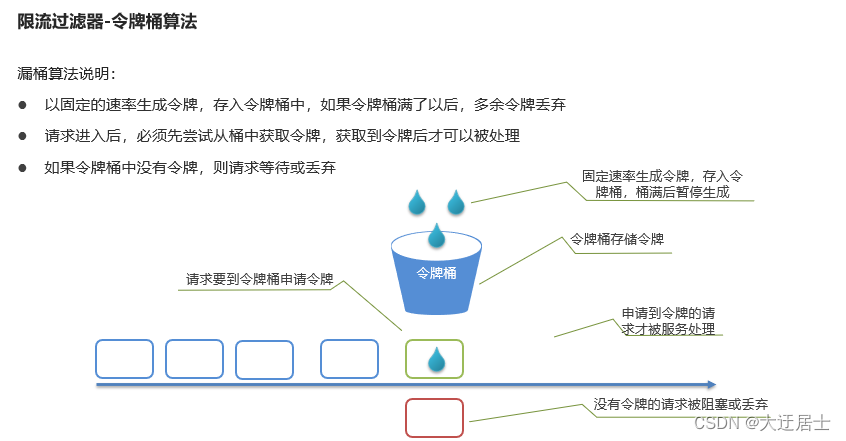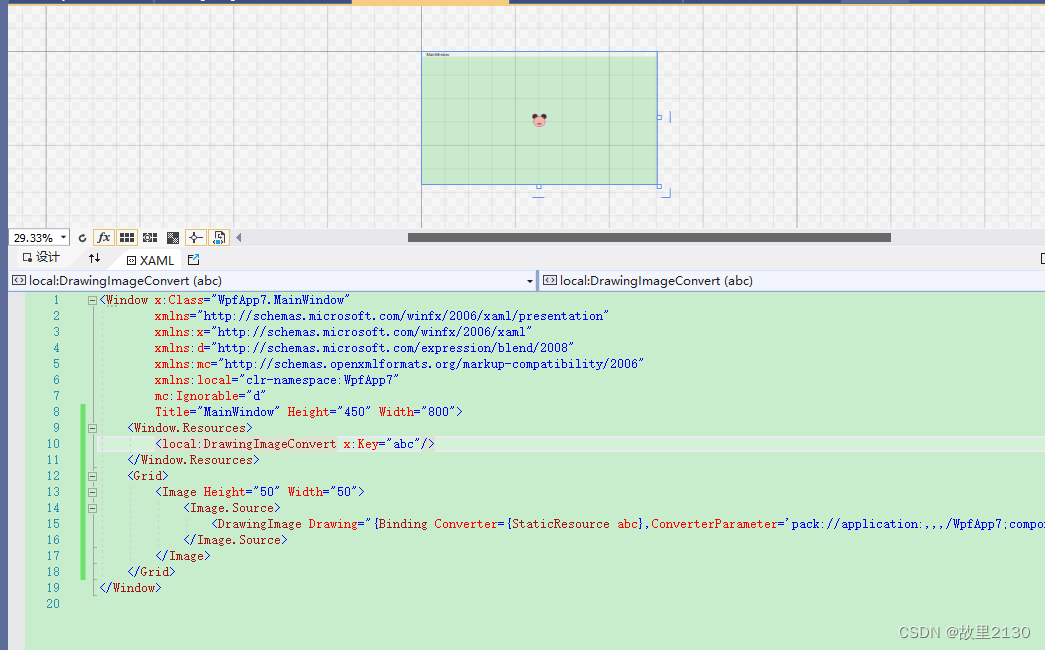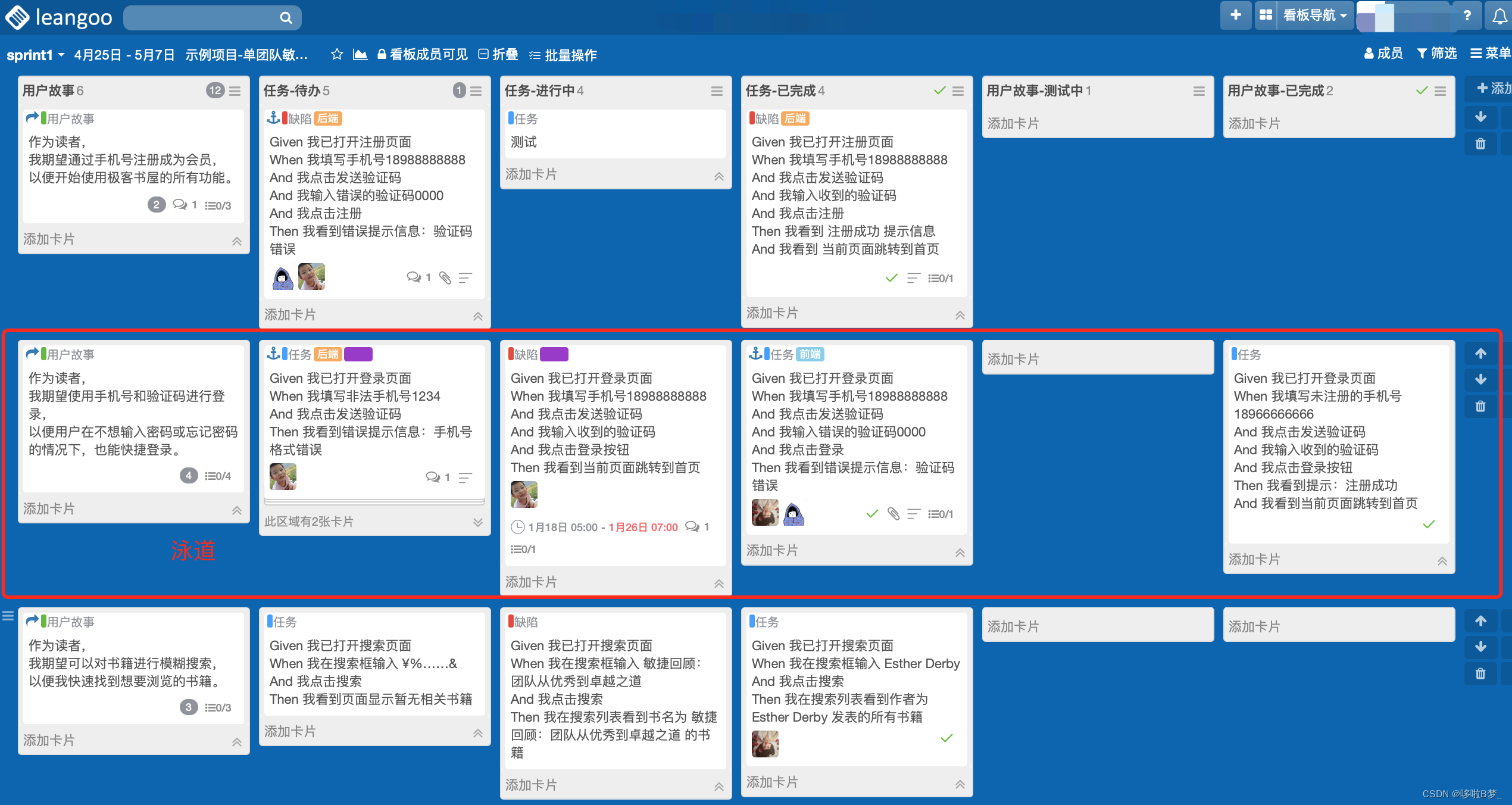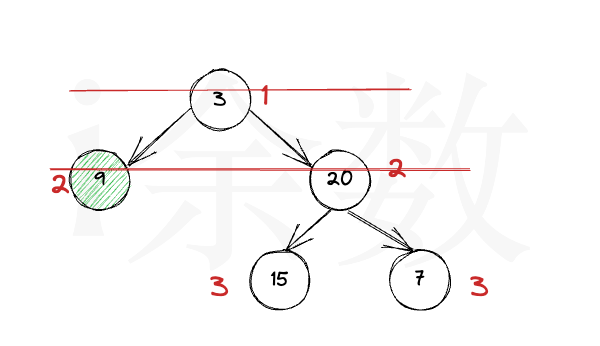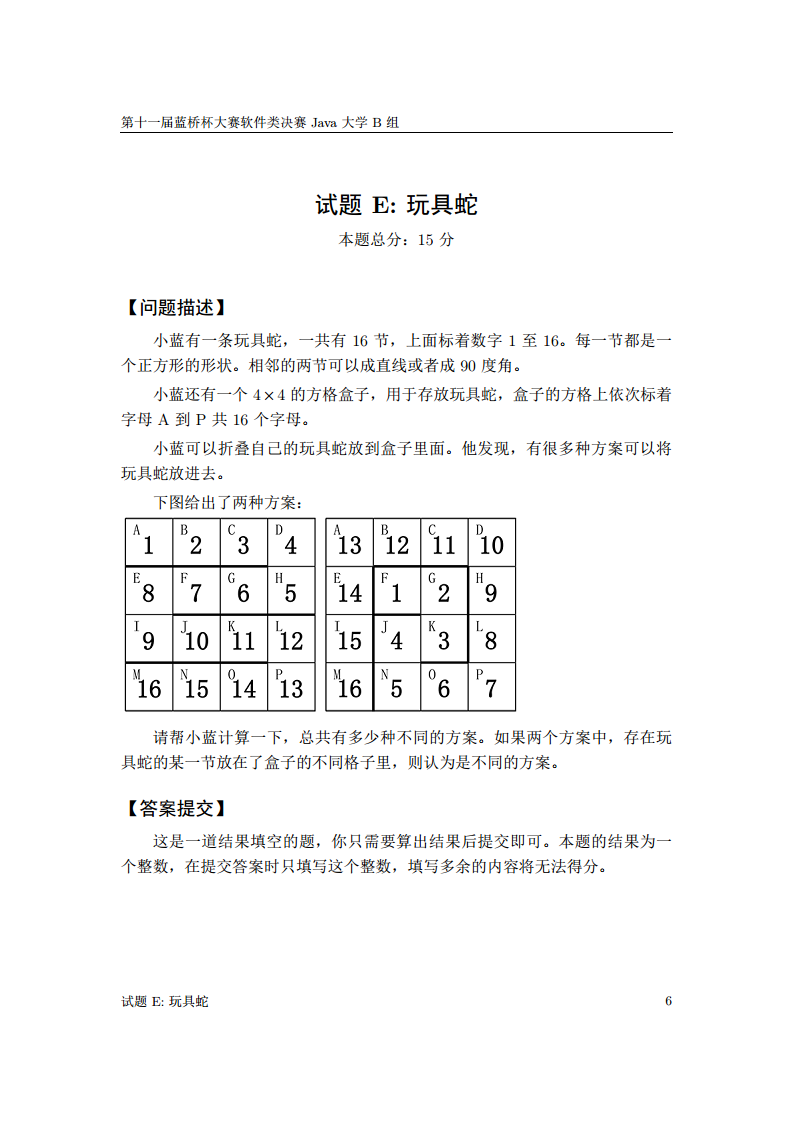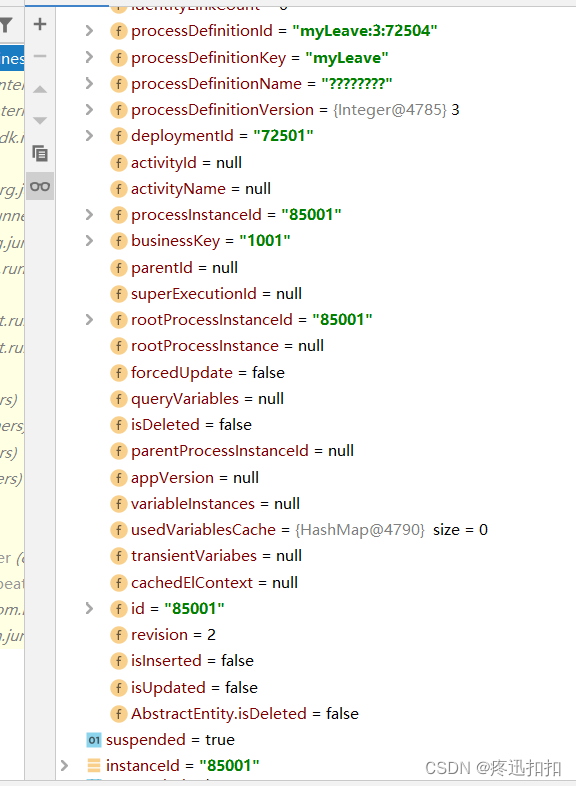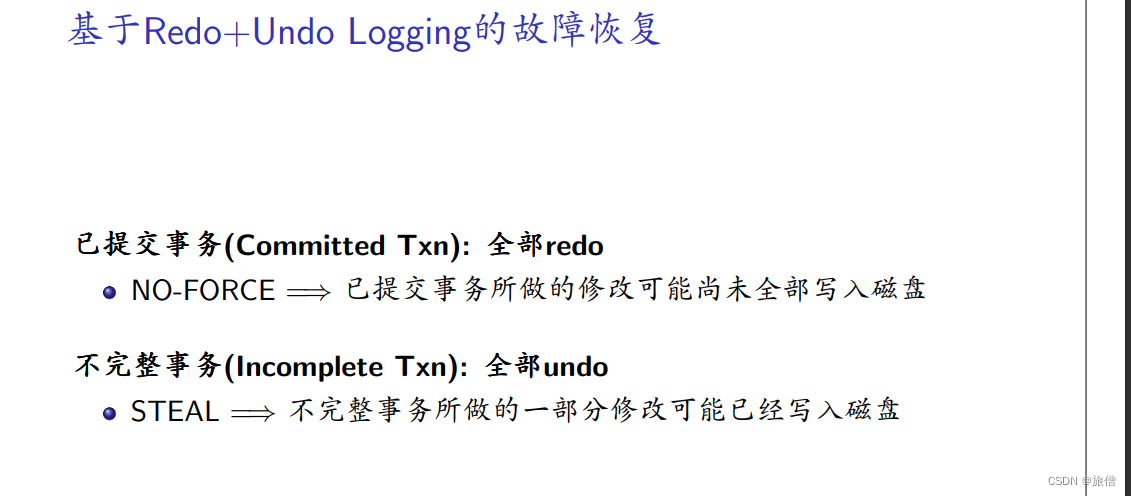
DINO代码学习笔记(一)中已经将输入transformer之前的参数处理给捋了一遍
DINO代码学习笔记(二)中将encoder部分给捋了一遍
DINO代码学习笔记(三)中将decoder部分给捋了一遍,以上将DINO的主体部分给过了一遍,使用了DINO_4scale.py的默认配置,最后一部分就是loss部分
接DINO代码学习笔记(三)
# deformable-detr-like anchor update
# reference_before_sigmoid = inverse_sigmoid(reference[:-1]) # n_dec, bs, nq, 4
outputs_coord_list = []
for dec_lid, (layer_ref_sig, layer_bbox_embed, layer_hs) in enumerate(zip(reference[:-1], self.bbox_embed, hs)):
layer_delta_unsig = layer_bbox_embed(layer_hs) # layer_bbox_embed Linear(256,256) Linear(256,256) Linear(256,4) [N,1100,4]
layer_outputs_unsig = layer_delta_unsig + inverse_sigmoid(layer_ref_sig)
layer_outputs_unsig = layer_outputs_unsig.sigmoid()
outputs_coord_list.append(layer_outputs_unsig)
outputs_coord_list = torch.stack(outputs_coord_list) # [6,N,1100,4]
outputs_class = torch.stack([layer_cls_embed(layer_hs) for
layer_cls_embed, layer_hs in zip(self.class_embed, hs)]) # layer_cls_embed Linear(256,91) outputs_class [6,N,1100,91]outputs_coord_list是将当前层的输出经过Linear后得到的Δb加上前一层输出的refence points,得到当前层的输出,维度为[6,N,1100,4],也就是论文中提到的Look Forward Twice;outputs_class就是每一层的输出经过Linear后得到,维度为[6,N,1100,91]。再通过dn_post_process函数将denoising part和matching part分离,这里的denoising part为200=single_pad * 2 * dn_number
def dn_post_process(outputs_class, outputs_coord, dn_meta, aux_loss, _set_aux_loss):
"""
post process of dn after output from the transformer
put the dn part in the dn_meta
"""
# 后处理过程中会将 denoising part和matching part分离,并将denoising part放到dn_meta中
if dn_meta and dn_meta['pad_size'] > 0:
output_known_class = outputs_class[:, :, :dn_meta['pad_size'], :]
output_known_coord = outputs_coord[:, :, :dn_meta['pad_size'], :]
outputs_class = outputs_class[:, :, dn_meta['pad_size']:, :]
outputs_coord = outputs_coord[:, :, dn_meta['pad_size']:, :]
out = {'pred_logits': output_known_class[-1], 'pred_boxes': output_known_coord[-1]}
if aux_loss:
out['aux_outputs'] = _set_aux_loss(output_known_class, output_known_coord)
dn_meta['output_known_lbs_bboxes'] = out
return outputs_class, outputs_coord分离后:
1、outputs_class[6,N,900,91],
2、outputs_coord_list[6,N,900,4]
要计算的辅助loss比较多
if self.dn_number > 0 and dn_meta is not None:
outputs_class, outputs_coord_list = \
dn_post_process(outputs_class, outputs_coord_list,
dn_meta,self.aux_loss,self._set_aux_loss)
out = {'pred_logits': outputs_class[-1], 'pred_boxes': outputs_coord_list[-1]}
if self.aux_loss:
out['aux_outputs'] = self._set_aux_loss(outputs_class, outputs_coord_list)
# for encoder output
if hs_enc is not None:
# prepare intermediate outputs
interm_coord = ref_enc[-1] # [N,900,4]
interm_class = self.transformer.enc_out_class_embed(hs_enc[-1]) # Linear(256,91) [N,900,91]
out['interm_outputs'] = {'pred_logits': interm_class, 'pred_boxes': interm_coord}
out['interm_outputs_for_matching_pre'] = {'pred_logits': interm_class, 'pred_boxes': init_box_proposal}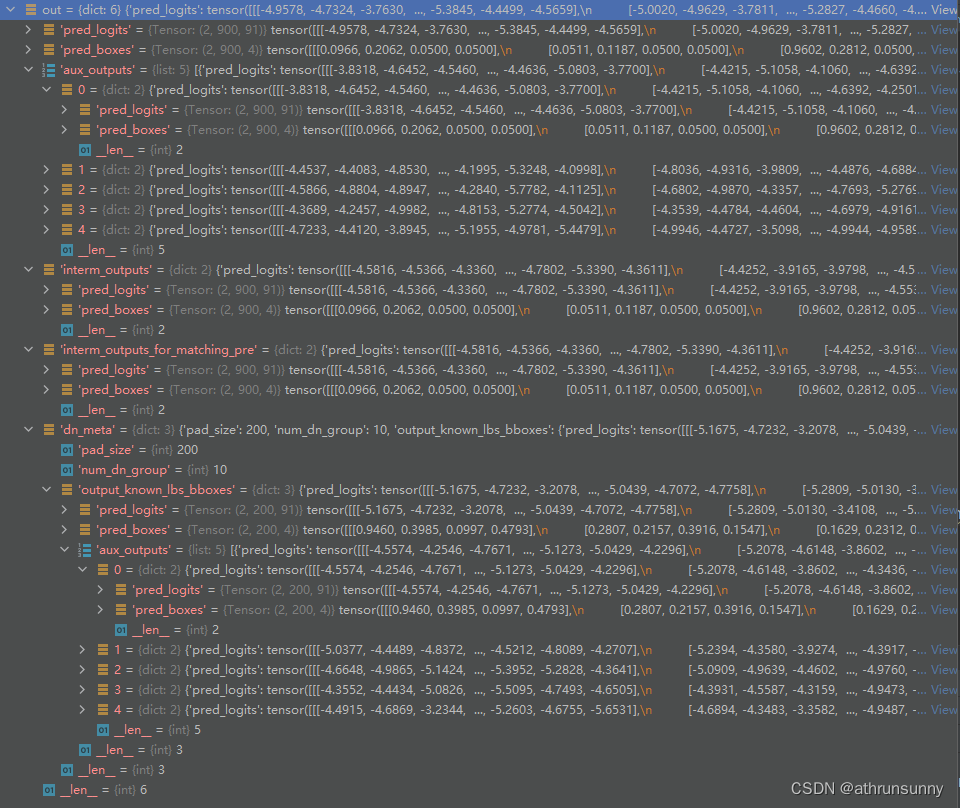
LOSS
匈牙利算法,核心就是找到最优的匹配,对该算法不理解的可以参看理解匈牙利算法
class HungarianMatcher(nn.Module):
"""This class computes an assignment between the targets and the predictions of the network
For efficiency reasons, the targets don't include the no_object. Because of this, in general,
there are more predictions than targets. In this case, we do a 1-to-1 matching of the best predictions,
while the others are un-matched (and thus treated as non-objects).
"""
def __init__(self, cost_class: float = 1, cost_bbox: float = 1, cost_giou: float = 1, focal_alpha=0.25):
"""Creates the matcher
Params:
cost_class: This is the relative weight of the classification error in the matching cost
cost_bbox: This is the relative weight of the L1 error of the bounding box coordinates in the matching cost
cost_giou: This is the relative weight of the giou loss of the bounding box in the matching cost
"""
super().__init__()
self.cost_class = cost_class
self.cost_bbox = cost_bbox
self.cost_giou = cost_giou
assert cost_class != 0 or cost_bbox != 0 or cost_giou != 0, "all costs cant be 0"
self.focal_alpha = focal_alpha
@torch.no_grad()
def forward(self, outputs, targets):
""" Performs the matching
Params:
outputs: This is a dict that contains at least these entries:
"pred_logits": Tensor of dim [batch_size, num_queries, num_classes] with the classification logits
"pred_boxes": Tensor of dim [batch_size, num_queries, 4] with the predicted box coordinates
targets: This is a list of targets (len(targets) = batch_size), where each target is a dict containing:
"labels": Tensor of dim [num_target_boxes] (where num_target_boxes is the number of ground-truth
objects in the target) containing the class labels
"boxes": Tensor of dim [num_target_boxes, 4] containing the target box coordinates
Returns:
A list of size batch_size, containing tuples of (index_i, index_j) where:
- index_i is the indices of the selected predictions (in order)
- index_j is the indices of the corresponding selected targets (in order)
For each batch element, it holds:
len(index_i) = len(index_j) = min(num_queries, num_target_boxes)
"""
bs, num_queries = outputs["pred_logits"].shape[:2] # 假设batch为2,num_queries=900(预设)
# We flatten to compute the cost matrices in a batch
out_prob = outputs["pred_logits"].flatten(0, 1).sigmoid() # [batch_size * num_queries, num_classes]
out_bbox = outputs["pred_boxes"].flatten(0, 1) # [batch_size * num_queries, 4]
# Also concat the target labels and boxes # 将目标的ground truth id和bbox在batch维度合并,假设此处label个数共有13个(假设第一个batch上有3个类,另一个batch上10个)那么tgt_ids的shape为13,tgt_bbox的shape为[13,4]
tgt_ids = torch.cat([v["labels"] for v in targets])
tgt_bbox = torch.cat([v["boxes"] for v in targets])
# Compute the classification cost.
alpha = self.focal_alpha
gamma = 2.0
neg_cost_class = (1 - alpha) * (out_prob ** gamma) * (-(1 - out_prob + 1e-8).log()) # [1800,91]
pos_cost_class = alpha * ((1 - out_prob) ** gamma) * (-(out_prob + 1e-8).log()) # [1800,91]
cost_class = pos_cost_class[:, tgt_ids] - neg_cost_class[:, tgt_ids] # [1800,13] 因为gt总共有13个label
# Compute the L1 cost between boxes
cost_bbox = torch.cdist(out_bbox, tgt_bbox, p=1) # 计算out_bbox和tgt_bbox的L1距离,此时cost_bbox的shape为[1800,13]
# Compute the giou cost betwen boxes
cost_giou = -generalized_box_iou(box_cxcywh_to_xyxy(out_bbox),
box_cxcywh_to_xyxy(tgt_bbox)) # 计算giou,此时cost_giou的shape为[1800,13]
# Final cost matrix
C = self.cost_bbox * cost_bbox + self.cost_class * cost_class + self.cost_giou * cost_giou
C = C.view(bs, num_queries, -1).cpu() # C [1800,13]->[2,900,13]
# 匈牙利算法的实现,指派最优的目标索引,输出一个二维列表,第一维是batch为0,即一个batch中第一张图像通过匈
# 牙利算法计算得到的最优解的横纵坐标,第二维是batch为1,即一个batch中第二张图像,后面的batch维度以此类推
# 假设batch0 :(array([444, 555, 819], dtype=int64), array([0, 2, 1], dtype=int64))
# batch1 :(array([233, 365, 368, 395, 429, 438, 824, 869, 889, 897], dtype=int64), array([8, 9, 2, 4, 5, 0, 6, 3, 1, 7], dtype=int64))
sizes = [len(v["boxes"]) for v in targets]
indices = [linear_sum_assignment(c[i]) for i, c in enumerate(C.split(sizes, -1))]
return [(torch.as_tensor(i, dtype=torch.int64), torch.as_tensor(j, dtype=torch.int64)) for i, j in indices]再就是分类和bbox loss
class SetCriterion(nn.Module):
""" This class computes the loss for Conditional DETR.
The process happens in two steps:
1) we compute hungarian assignment between ground truth boxes and the outputs of the model
2) we supervise each pair of matched ground-truth / prediction (supervise class and box)
"""
def __init__(self, num_classes, matcher, weight_dict, focal_alpha, losses):
""" Create the criterion.
Parameters:
num_classes: number of object categories, omitting the special no-object category
matcher: module able to compute a matching between targets and proposals
weight_dict: dict containing as key the names of the losses and as values their relative weight.
losses: list of all the losses to be applied. See get_loss for list of available losses.
focal_alpha: alpha in Focal Loss
"""
super().__init__()
self.num_classes = num_classes
self.matcher = matcher
self.weight_dict = weight_dict
self.losses = losses
self.focal_alpha = focal_alpha
def loss_labels(self, outputs, targets, indices, num_boxes, log=True):
"""Classification loss (Binary focal loss)
targets dicts must contain the key "labels" containing a tensor of dim [nb_target_boxes]
"""
assert 'pred_logits' in outputs
src_logits = outputs['pred_logits'] # [N,200,91]/ [N,900,91]
idx = self._get_src_permutation_idx(indices)
target_classes_o = torch.cat([t["labels"][J] for t, (_, J) in zip(targets, indices)])
target_classes = torch.full(src_logits.shape[:2], self.num_classes,
dtype=torch.int64, device=src_logits.device)
target_classes[idx] = target_classes_o
target_classes_onehot = torch.zeros([src_logits.shape[0], src_logits.shape[1], src_logits.shape[2]+1],
dtype=src_logits.dtype, layout=src_logits.layout, device=src_logits.device)
target_classes_onehot.scatter_(2, target_classes.unsqueeze(-1), 1)
target_classes_onehot = target_classes_onehot[:,:,:-1] # one_hot编码 [N,200,91]/[N,900,91]
loss_ce = sigmoid_focal_loss(src_logits, target_classes_onehot, num_boxes, alpha=self.focal_alpha, gamma=2) * src_logits.shape[1]
losses = {'loss_ce': loss_ce}
if log:
# TODO this should probably be a separate loss, not hacked in this one here
losses['class_error'] = 100 - accuracy(src_logits[idx], target_classes_o)[0]
return losses
@torch.no_grad()
def loss_cardinality(self, outputs, targets, indices, num_boxes):
""" Compute the cardinality error, ie the absolute error in the number of predicted non-empty boxes
This is not really a loss, it is intended for logging purposes only. It doesn't propagate gradients
"""
pred_logits = outputs['pred_logits']
device = pred_logits.device
tgt_lengths = torch.as_tensor([len(v["labels"]) for v in targets], device=device)
# Count the number of predictions that are NOT "no-object" (which is the last class)
card_pred = (pred_logits.argmax(-1) != pred_logits.shape[-1] - 1).sum(1)
card_err = F.l1_loss(card_pred.float(), tgt_lengths.float())
losses = {'cardinality_error': card_err}
return losses
def loss_boxes(self, outputs, targets, indices, num_boxes):
"""Compute the losses related to the bounding boxes, the L1 regression loss and the GIoU loss
targets dicts must contain the key "boxes" containing a tensor of dim [nb_target_boxes, 4]
The target boxes are expected in format (center_x, center_y, w, h), normalized by the image size.
"""
assert 'pred_boxes' in outputs
idx = self._get_src_permutation_idx(indices)
src_boxes = outputs['pred_boxes'][idx] # [130,4]/[13,4]
target_boxes = torch.cat([t['boxes'][i] for t, (_, i) in zip(targets, indices)], dim=0) # [130,4]/[13,4]
loss_bbox = F.l1_loss(src_boxes, target_boxes, reduction='none')
losses = {}
losses['loss_bbox'] = loss_bbox.sum() / num_boxes
loss_giou = 1 - torch.diag(box_ops.generalized_box_iou(
box_ops.box_cxcywh_to_xyxy(src_boxes),
box_ops.box_cxcywh_to_xyxy(target_boxes)))
losses['loss_giou'] = loss_giou.sum() / num_boxes
# calculate the x,y and h,w loss
with torch.no_grad():
losses['loss_xy'] = loss_bbox[..., :2].sum() / num_boxes
losses['loss_hw'] = loss_bbox[..., 2:].sum() / num_boxes
return losses
def loss_masks(self, outputs, targets, indices, num_boxes):
"""Compute the losses related to the masks: the focal loss and the dice loss.
targets dicts must contain the key "masks" containing a tensor of dim [nb_target_boxes, h, w]
"""
assert "pred_masks" in outputs
src_idx = self._get_src_permutation_idx(indices)
tgt_idx = self._get_tgt_permutation_idx(indices)
src_masks = outputs["pred_masks"]
src_masks = src_masks[src_idx]
masks = [t["masks"] for t in targets]
# TODO use valid to mask invalid areas due to padding in loss
target_masks, valid = nested_tensor_from_tensor_list(masks).decompose()
target_masks = target_masks.to(src_masks)
target_masks = target_masks[tgt_idx]
# upsample predictions to the target size
src_masks = interpolate(src_masks[:, None], size=target_masks.shape[-2:],
mode="bilinear", align_corners=False)
src_masks = src_masks[:, 0].flatten(1)
target_masks = target_masks.flatten(1)
target_masks = target_masks.view(src_masks.shape)
losses = {
"loss_mask": sigmoid_focal_loss(src_masks, target_masks, num_boxes),
"loss_dice": dice_loss(src_masks, target_masks, num_boxes),
}
return losses
def _get_src_permutation_idx(self, indices):
# permute predictions following indices
batch_idx = torch.cat([torch.full_like(src, i) for i, (src, _) in enumerate(indices)]) # batch_idx得到的索引是属于batch中的哪一张图像
src_idx = torch.cat([src for (src, _) in indices]) # src_idx则表示横坐标信息
return batch_idx, src_idx
def _get_tgt_permutation_idx(self, indices):
# permute targets following indices
batch_idx = torch.cat([torch.full_like(tgt, i) for i, (_, tgt) in enumerate(indices)])
tgt_idx = torch.cat([tgt for (_, tgt) in indices])
return batch_idx, tgt_idx
def get_loss(self, loss, outputs, targets, indices, num_boxes, **kwargs):
loss_map = {
'labels': self.loss_labels,
'cardinality': self.loss_cardinality,
'boxes': self.loss_boxes,
'masks': self.loss_masks,
}
assert loss in loss_map, f'do you really want to compute {loss} loss?'
return loss_map[loss](outputs, targets, indices, num_boxes, **kwargs)
def forward(self, outputs, targets, return_indices=False):
""" This performs the loss computation.
Parameters:
outputs: dict of tensors, see the output specification of the model for the format
targets: list of dicts, such that len(targets) == batch_size.
The expected keys in each dict depends on the losses applied, see each loss' doc
return_indices: used for vis. if True, the layer0-5 indices will be returned as well.
"""
outputs_without_aux = {k: v for k, v in outputs.items() if k != 'aux_outputs'}
device=next(iter(outputs.values())).device
indices = self.matcher(outputs_without_aux, targets)
if return_indices:
indices0_copy = indices
indices_list = []
# Compute the average number of target boxes accross all nodes, for normalization purposes
num_boxes = sum(len(t["labels"]) for t in targets)
num_boxes = torch.as_tensor([num_boxes], dtype=torch.float, device=device)
if is_dist_avail_and_initialized():
torch.distributed.all_reduce(num_boxes)
num_boxes = torch.clamp(num_boxes / get_world_size(), min=1).item()
# Compute all the requested losses
losses = {}
# prepare for dn loss
dn_meta = outputs['dn_meta']
if self.training and dn_meta and 'output_known_lbs_bboxes' in dn_meta:
output_known_lbs_bboxes,single_pad, scalar = self.prep_for_dn(dn_meta) # 取出denoising part中预测的label和bbox以及single_pad和分组scalar
dn_pos_idx = []
dn_neg_idx = []
for i in range(len(targets)): # 在batch上遍历,根据之前在cdn(prepare_for_cdn)中增加噪声的位置,获取每个target上增加噪声对应的索引
if len(targets[i]['labels']) > 0:
t = torch.range(0, len(targets[i]['labels']) - 1).long().cuda()
t = t.unsqueeze(0).repeat(scalar, 1) # [scalar,len(targets[i]['labels'])] [10,3]/[10,10]
tgt_idx = t.flatten() # [30]/[100]
output_idx = (torch.tensor(range(scalar)) * single_pad).long().cuda().unsqueeze(1) + t # [10,3]/[10,10]
output_idx = output_idx.flatten() # [30]/[100]
else:
output_idx = tgt_idx = torch.tensor([]).long().cuda()
dn_pos_idx.append((output_idx, tgt_idx))
dn_neg_idx.append((output_idx + single_pad // 2, tgt_idx))
output_known_lbs_bboxes=dn_meta['output_known_lbs_bboxes']
l_dict = {}
for loss in self.losses:
kwargs = {}
if 'labels' in loss:
kwargs = {'log': False}
l_dict.update(self.get_loss(loss, output_known_lbs_bboxes, targets, dn_pos_idx, num_boxes*scalar,**kwargs))
l_dict = {k + f'_dn': v for k, v in l_dict.items()}
losses.update(l_dict)
else:
l_dict = dict()
l_dict['loss_bbox_dn'] = torch.as_tensor(0.).to('cuda')
l_dict['loss_giou_dn'] = torch.as_tensor(0.).to('cuda')
l_dict['loss_ce_dn'] = torch.as_tensor(0.).to('cuda')
l_dict['loss_xy_dn'] = torch.as_tensor(0.).to('cuda')
l_dict['loss_hw_dn'] = torch.as_tensor(0.).to('cuda')
l_dict['cardinality_error_dn'] = torch.as_tensor(0.).to('cuda')
losses.update(l_dict)
for loss in self.losses:
losses.update(self.get_loss(loss, outputs, targets, indices, num_boxes))
# In case of auxiliary losses, we repeat this process with the output of each intermediate layer.
if 'aux_outputs' in outputs:
for idx, aux_outputs in enumerate(outputs['aux_outputs']):
indices = self.matcher(aux_outputs, targets)
if return_indices:
indices_list.append(indices)
for loss in self.losses:
if loss == 'masks':
# Intermediate masks losses are too costly to compute, we ignore them.
continue
kwargs = {}
if loss == 'labels':
# Logging is enabled only for the last layer
kwargs = {'log': False}
l_dict = self.get_loss(loss, aux_outputs, targets, indices, num_boxes, **kwargs)
l_dict = {k + f'_{idx}': v for k, v in l_dict.items()}
losses.update(l_dict)
if self.training and dn_meta and 'output_known_lbs_bboxes' in dn_meta:
aux_outputs_known = output_known_lbs_bboxes['aux_outputs'][idx]
l_dict={}
for loss in self.losses:
kwargs = {}
if 'labels' in loss:
kwargs = {'log': False}
l_dict.update(self.get_loss(loss, aux_outputs_known, targets, dn_pos_idx, num_boxes*scalar,
**kwargs))
l_dict = {k + f'_dn_{idx}': v for k, v in l_dict.items()}
losses.update(l_dict)
else:
l_dict = dict()
l_dict['loss_bbox_dn']=torch.as_tensor(0.).to('cuda')
l_dict['loss_giou_dn']=torch.as_tensor(0.).to('cuda')
l_dict['loss_ce_dn']=torch.as_tensor(0.).to('cuda')
l_dict['loss_xy_dn'] = torch.as_tensor(0.).to('cuda')
l_dict['loss_hw_dn'] = torch.as_tensor(0.).to('cuda')
l_dict['cardinality_error_dn'] = torch.as_tensor(0.).to('cuda')
l_dict = {k + f'_{idx}': v for k, v in l_dict.items()}
losses.update(l_dict)
# interm_outputs loss
if 'interm_outputs' in outputs:
interm_outputs = outputs['interm_outputs']
indices = self.matcher(interm_outputs, targets)
if return_indices:
indices_list.append(indices)
for loss in self.losses:
if loss == 'masks':
# Intermediate masks losses are too costly to compute, we ignore them.
continue
kwargs = {}
if loss == 'labels':
# Logging is enabled only for the last layer
kwargs = {'log': False}
l_dict = self.get_loss(loss, interm_outputs, targets, indices, num_boxes, **kwargs)
l_dict = {k + f'_interm': v for k, v in l_dict.items()}
losses.update(l_dict)
# enc output loss
if 'enc_outputs' in outputs:
for i, enc_outputs in enumerate(outputs['enc_outputs']):
indices = self.matcher(enc_outputs, targets)
if return_indices:
indices_list.append(indices)
for loss in self.losses:
if loss == 'masks':
# Intermediate masks losses are too costly to compute, we ignore them.
continue
kwargs = {}
if loss == 'labels':
# Logging is enabled only for the last layer
kwargs = {'log': False}
l_dict = self.get_loss(loss, enc_outputs, targets, indices, num_boxes, **kwargs)
l_dict = {k + f'_enc_{i}': v for k, v in l_dict.items()}
losses.update(l_dict)
if return_indices:
indices_list.append(indices0_copy)
return losses, indices_list
return losses
def prep_for_dn(self,dn_meta):
output_known_lbs_bboxes = dn_meta['output_known_lbs_bboxes']
num_dn_groups,pad_size=dn_meta['num_dn_group'],dn_meta['pad_size']
assert pad_size % num_dn_groups==0
single_pad=pad_size//num_dn_groups
return output_known_lbs_bboxes,single_pad,num_dn_groups代码有点长,其实就是loss_labels, loss_cardinality, loss_boxes几个函数,out中的数据和target计算loss
一、首先计算denoising part和target的loss,在backbone中prepare_for_cdn()分了positive idx和negative idx,计算loss时在batch上遍历取出他们
if self.training and dn_meta and 'output_known_lbs_bboxes' in dn_meta:
output_known_lbs_bboxes,single_pad, scalar = self.prep_for_dn(dn_meta) # 取出denoising part中预测的label和bbox以及single_pad和分组scalar
dn_pos_idx = []
dn_neg_idx = []
for i in range(len(targets)): # 在batch上遍历,根据之前在cdn(prepare_for_cdn)中增加噪声的位置,获取每个target上增加噪声对应的索引
if len(targets[i]['labels']) > 0:
t = torch.range(0, len(targets[i]['labels']) - 1).long().cuda()
t = t.unsqueeze(0).repeat(scalar, 1) # [scalar,len(targets[i]['labels'])] [10,3]/[10,10]
tgt_idx = t.flatten() # [30]/[100]
output_idx = (torch.tensor(range(scalar)) * single_pad).long().cuda().unsqueeze(1) + t # [10,3]/[10,10]
output_idx = output_idx.flatten() # [30]/[100]
else:
output_idx = tgt_idx = torch.tensor([]).long().cuda()
dn_pos_idx.append((output_idx, tgt_idx))
dn_neg_idx.append((output_idx + single_pad // 2, tgt_idx))
output_known_lbs_bboxes=dn_meta['output_known_lbs_bboxes']
l_dict = {}
for loss in self.losses:
kwargs = {}
if 'labels' in loss:
kwargs = {'log': False}
l_dict.update(self.get_loss(loss, output_known_lbs_bboxes, targets, dn_pos_idx, num_boxes*scalar,**kwargs))
l_dict = {k + f'_dn': v for k, v in l_dict.items()}
losses.update(l_dict)二、再者计算decoder输出与target的loss
for loss in self.losses:
losses.update(self.get_loss(loss, outputs, targets, indices, num_boxes))三、再者计算denoising part和matching part中间过程与target的loss,即decoder前5层的输出(共六层,matching part最后一层在在上面二中,denoising part最后一层在在上面一中)
if 'aux_outputs' in outputs:
for idx, aux_outputs in enumerate(outputs['aux_outputs']):
indices = self.matcher(aux_outputs, targets)
if return_indices:
indices_list.append(indices)
for loss in self.losses:
if loss == 'masks':
# Intermediate masks losses are too costly to compute, we ignore them.
continue
kwargs = {}
if loss == 'labels':
# Logging is enabled only for the last layer
kwargs = {'log': False}
l_dict = self.get_loss(loss, aux_outputs, targets, indices, num_boxes, **kwargs)
l_dict = {k + f'_{idx}': v for k, v in l_dict.items()}
losses.update(l_dict)
if self.training and dn_meta and 'output_known_lbs_bboxes' in dn_meta:
aux_outputs_known = output_known_lbs_bboxes['aux_outputs'][idx]
l_dict={}
for loss in self.losses:
kwargs = {}
if 'labels' in loss:
kwargs = {'log': False}
l_dict.update(self.get_loss(loss, aux_outputs_known, targets, dn_pos_idx, num_boxes*scalar,
**kwargs))
l_dict = {k + f'_dn_{idx}': v for k, v in l_dict.items()}
losses.update(l_dict)
else:
l_dict = dict()
l_dict['loss_bbox_dn']=torch.as_tensor(0.).to('cuda')
l_dict['loss_giou_dn']=torch.as_tensor(0.).to('cuda')
l_dict['loss_ce_dn']=torch.as_tensor(0.).to('cuda')
l_dict['loss_xy_dn'] = torch.as_tensor(0.).to('cuda')
l_dict['loss_hw_dn'] = torch.as_tensor(0.).to('cuda')
l_dict['cardinality_error_dn'] = torch.as_tensor(0.).to('cuda')
l_dict = {k + f'_{idx}': v for k, v in l_dict.items()}
losses.update(l_dict)四、最后计算由encoder select box生成的bbox和class与target的loss
# interm_outputs loss
if 'interm_outputs' in outputs:
interm_outputs = outputs['interm_outputs']
indices = self.matcher(interm_outputs, targets)
if return_indices:
indices_list.append(indices)
for loss in self.losses:
if loss == 'masks':
# Intermediate masks losses are too costly to compute, we ignore them.
continue
kwargs = {}
if loss == 'labels':
# Logging is enabled only for the last layer
kwargs = {'log': False}
l_dict = self.get_loss(loss, interm_outputs, targets, indices, num_boxes, **kwargs)
l_dict = {k + f'_interm': v for k, v in l_dict.items()}
losses.update(l_dict)好了,DINO的代码整体流程到这里就结束了
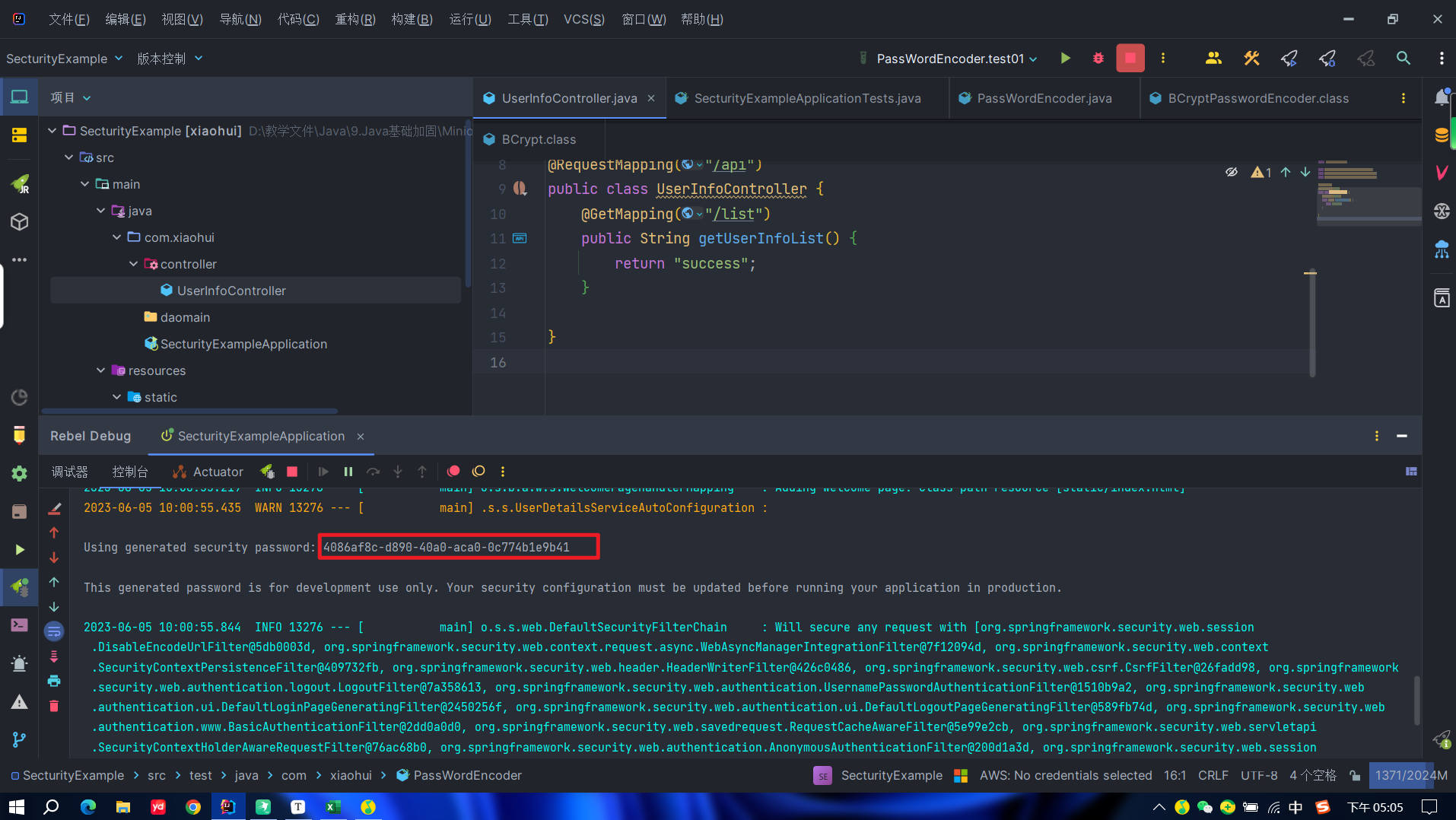
![[230603]托福听力精听|TPO66C2|Financial Advice](https://img-blog.csdnimg.cn/da06e31dfa514056bcdedfe9dddf73f4.jpeg)
